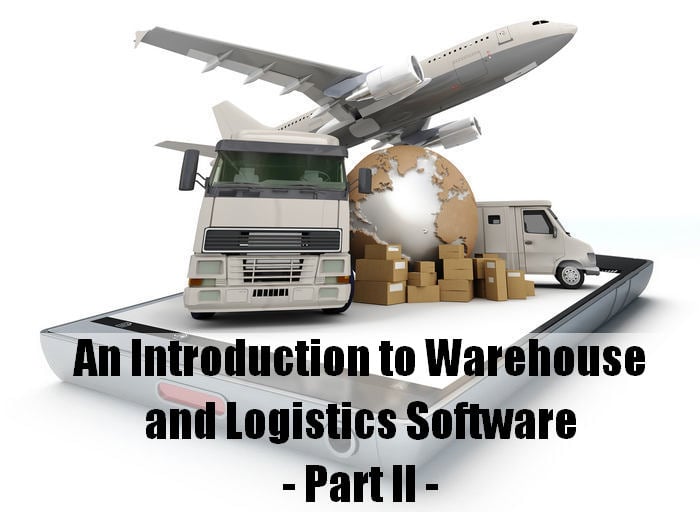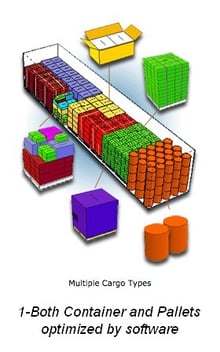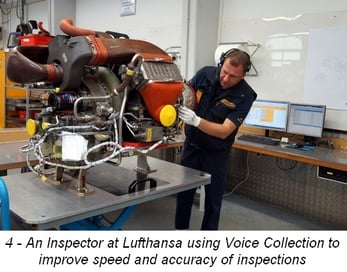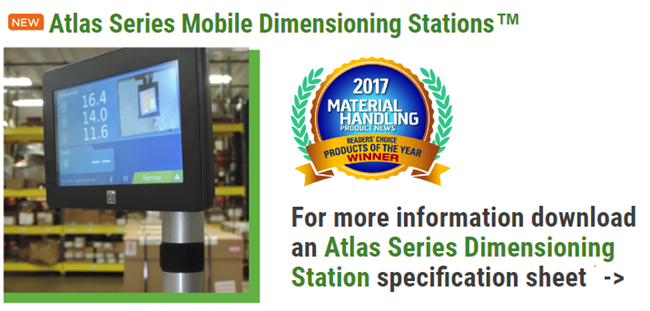
As we said in Part One, (Here, in case you missed it), a short series of articles on Manufacturing Execution Systems (MES) we did had some excellent feedback that compelled us to share some similar info for the Warehouse and Logistics space. (See parts One, Two and Three here). While Part One focused on the major systems that would be better known and practically required for most growing businesses, this week we focus on some lesser-known specialty solutions that we think are both compelling in their intent and potentially important enough that they will become commonplace in the future.
1. Pallet Optimization Applications

One of the niftiest niche applications out there could also perhaps be one of the most impactful for businesses. Pallet Optimization software (also referred to as “Pallet Configuration” or “Palletizing” software, among others), is estimated to save its users anywhere from 5% to 20% on shipping costs. For those of us who love to exercise our OCD side or love the challenge of using space better, this is somewhat of a dream application.
The software lets you take an assortment of boxes or cases and then diagrams for you the optimal way to stack them on a pallet, or in a truck, or in a container so that you can eliminate as much dead space as possible. They will incorporate variables like Load Type, Container/Vehicle type, SKU Types and include other parameters and Load Rules like Loading Sequence, Label Orientations (on cases), Stacking Order and even Unitization - a 2-step process that maps out optimized pallet configuration for optimizing container and or truck loading with those pallets.
2. Green Supply Chain Solutions

It’s not news that many industries are now embracing green practices to ensure that their production practices have a minimal negative impact on the environment. But supply chain software is increasingly being tailored not only for brand reputation, but to improve sustainability, and most importantly as a driver for business – profitability. Where eco-friendly practices were once considered to be an “investment” for reputation or PR purposes, they are now reaching the critical mass where the effort results in real savings, not just investment in PR.
In 2016, the average cost of renewable energy in the US started to become cheaper than fossil fuels, even natural gas (Onshore wind = $43.4/MWh vs. Natural Gas Advanced Cycle = $51.6/MWh). By 2022 most renewables are forecast to out-perform all fossil fuels (except some types of natural gas generation). Even without regard to the environment, the “Green Supply Chain” concept already has a built-in financial incentive that is growing over time.
Software applications that assist in this space have the potential to make your supply chain “greener” in a variety of ways:
- Provide a scorecard for all the elements of your supply chain to measure indicators like water consumption, energy efficiency, workplace conditions or even policies for handling toxic chemicals.
- Be a monitor for compliance to ensure that your business stays within its regulatory boundaries and vet’s potential new suppliers that might put you at risk or lets you rank and reward those you already work with for improved performance.
- Will integrate with other “green” focused applications or hardware like route optimization tools or e-seals on containers that reduce or eliminate the need for paper manifests.
There is a long and growing list of functionality and options in this space is designed to be tailored to every unique business and with an eye to providing a fast return as the real costs of carbon are being better understood and counted accordingly.
3. Social Supply Chain

Just as the name implies, this solution space brings “social media” into the one place we’ve always told our employees to keep it out of – the workplace! Despite the implication, using social media tools in the workplace is not as new as it sounds: Yammer, a social platform acquired by Microsoft years ago and incorporated into their Office suite, is used by 85% of the Fortune 500 list already.
What IS new about using “social” tools is their entry into the back office and operations side of the business. Ironically, this is potentially where the biggest and most important impacts might have yet to happen. Real-time collaboration between suppliers, employees, customers and downstream distribution are all possible with some of these solutions.
A few of the possibilities that “Social” adds to the supply chain would include:
- Direct interaction between front-line staff (e., drivers) with customers
- Immediate customer feedback that can drive faster responses to quality control or demand forecasting
- Speed coordination across the supply chain when unexpected events take place
- Gather improvement ideas and feedback outside of the normal work environment
- Extend the reach of marketing on an individual basis
While the data and science in this space are moving slower than the expansion of the applications (as they tend to do when it involves heavy doses of human communication), it would not be surprising if this was something that was “here to stay.” Social tools have flourished by allowing people to communicate in ways that are more natural to them than email or most meeting settings.
4. Voice Collection Systems

Finally, if we are getting “social,” it's worth pointing out the advancements taking place with voice technology in the workplace too. “Voice Collection” is a misnomer – these applications are a “voice emulation” tool that can be used to drive huge efficiencies in the warehouse in many process areas (i.e., Picking). Companies like Honeywell and Wavelink have developed a hardware/software solution that gives workers a headset with a microphone on it which allows them to interact with your systems by giving them instructions, and then using their voice responses to indicate if something has been completed, or has a problem, etc.
Applications may be possible for almost anything – delivery drivers, airplane and truck inspections and more. We are only just touching the tip of the potential in this space at this time. One of our Resellers, Advanced Mobile Group, has been sharing some excellent in-depth pieces in this space recently and they show some incredible numbers when it comes to generating a quick ROI or a very significant long-term impact in productivity or throughput. Here is a sample with excellent case studies in industries as diverse as ice cream, medical supplies, irrigation, and entertainment.
And There is Always More
In looking at the software space for warehouse and logistics operations, we’ve found a large and diverse universe that is expanding rapidly. These are only a few of the more interesting applications that could be shared at this time. What all of these implies is that more than ever, your business will need always to maintain a robust IT infrastructure that will not only let you bring in new applications easily as they are needed, but also carry the bandwidth and ease-of-use required to make the improvements you want as seamless as possible to avoid disruptions and reap the efficiency gains you are planning for quickly.
Learn about our new Atlas Series Mobile Dimensioning Stations.TM This award-winning new technology can scan any package in any orientation, and even takes a photo of every item for tracking and claim protection.











